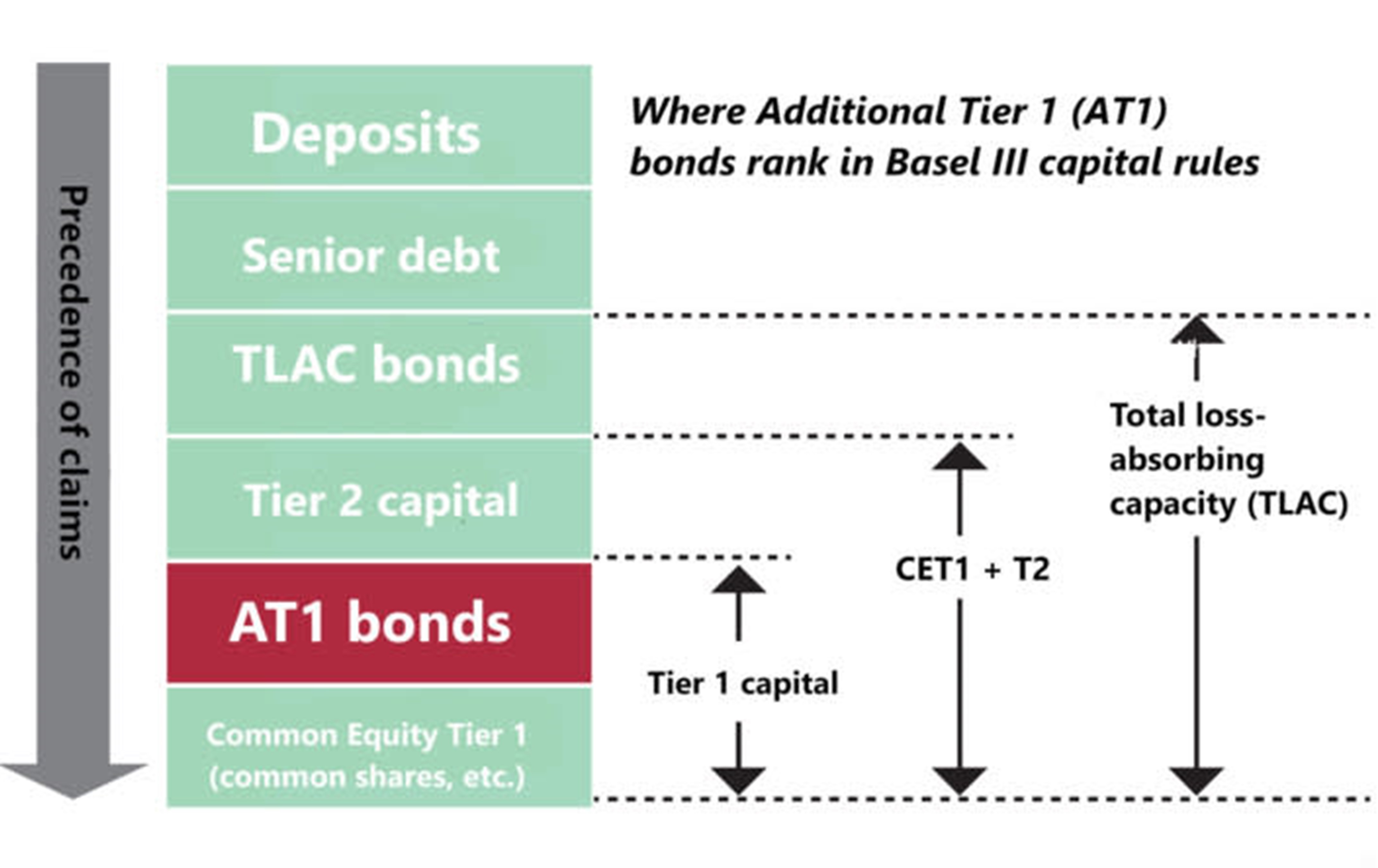
BIX ARTICLE
Understanding AT1 Bonds In The Malaysian Context
Jun 23, 2023
|
5 min read
Featured Posts
Social Bonds Illustrative Use-Of-Proceeds Case Studies Coronavirus
Jul 06, 2020
|
2 min read
Sustainable Banking Network (SBN) Creating Green Bond Markets
Jul 06, 2020
|
2 min read
Why is Inflation Making a Big Comeback After Being Absent for Decades in the U.S.?
Mar 24, 2022
|
7 min read
SC issues Corporate Governance Strategic Priorities 2021-2023
Mar 29, 2022
|
3 min read

In the global financial market, AT1 bonds have gained significant attention as a capital instrument for financial institutions. AT1 bond received massive global attention when the world witnessed 16 billion Swiss francs (USD17 billion) worth of AT1 bond issued by Credit Suisse being wiped out.
But what are AT1 bonds?
This article focuses on the Malaysian context, examining the role, characteristics, and implications of AT1 bonds.
Understanding AT1 Bonds
AT1 bonds, also known as Additional Tier 1 bonds or Contingent Convertible (CoCo) bonds, are hybrid securities that blend debt and equity features, designed to provide banks with additional capital buffers to absorb losses during times of financial stress. These bonds serve as a key tool to meet the regulatory capital requirements set by regulatory bodies such as the Basel Committee on Banking Supervision (BCBS). AT1 bonds have gained prominence since the implementation of the Basel III framework, which introduced stricter capital adequacy standards for financial institutions.
Characteristics of AT1 Bonds
Understanding the characteristics of AT1 bonds is essential for investors and financial institutions alike in navigating the complex world of hybrid debt instruments. As these bonds gain prominence in the global financial landscape, comprehending their unique features becomes paramount to make informed investment decisions and manage risk effectively.
- Loss Absorption: AT1 bonds are structured to absorb losses. If a financial institution's capital falls below a pre-defined threshold, the AT1 bonds can be converted into equity or written off, allowing the institution to restore its capital adequacy.
- Perpetual Tenure: AT1 bonds typically have no maturity date, making them perpetual instruments. This indefinite tenure poses challenges for investors who seek clarity on the timing of potential principal repayment. However, they often include call options that allow the issuer to redeem the bonds after a specified period, subject to regulatory approval.
- High Yields: Due to their higher risk profile compared to traditional bonds, AT1 bonds offer higher yields to compensate investors for the increased risk. The yields are often reset periodically based on a predetermined formula, such as a fixed spread over a benchmark interest rate.
AT1 Bonds in the Malaysian Context
In Malaysia, AT1 bonds play a crucial role in bolstering the capital structure of financial institutions, ensuring their resilience against economic downturns and financial shocks. The central bank, Bank Negara Malaysia (BNM), has adopted the Basel III framework to enhance the stability and resilience of the Malaysian banking system. AT1 bonds are recognized as eligible capital instruments under the Basel III guidelines, contributing to a bank's Tier 1 capital.
AT1 bonds carry the following benefits to financial institutions:
- Capital Strengthening: AT1 bonds enable financial institutions to augment their Tier 1 capital ratios, which is a key measure of a bank's financial strength and ability to absorb losses. These bonds provide a cushion to absorb losses and support the continued provision of credit to the economy.
- Diversification of Funding Sources: By issuing AT1 bonds, financial institutions can diversify their funding sources beyond traditional methods like equity or senior debt. This reduces reliance on a single source and enhances their financial flexibility.
- Attraction of Investors: AT1 bonds appeal to investors seeking higher yields, as they offer attractive coupon rates. This broadens the investor base for financial institutions, attracting both domestic and international investors.
On the other hand, AT1 bonds also contain the following implications to investors:
- Yield Potential: AT1 bonds provide investors with an opportunity to earn higher yields compared to conventional fixed-income securities. However, it is crucial for investors to assess the risk-reward profile and consider the financial health of the issuing institution.
- Risk and Complexity: AT1 bonds are considered riskier than conventional debt securities due to their loss-absorption and conversion features. Investors need to thoroughly understand the risks associated with these bonds, including the potential for dilution of equity holdings in the event of conversion.
- Liquidity and Secondary Market: The perpetual nature of AT1 bonds can result in limited liquidity in the secondary market. Investors should carefully assess the availability of buyers and sellers, potential trading volumes, and bid-ask spreads before investing in these instruments.
- Regulatory Environment: Investors need to stay updated on regulatory developments and guidelines related to AT1 bonds. The Central Bank's policies and directives play a significant role in shaping the market for these instruments in Malaysia.
Conclusion
AT1 bonds have emerged as an important financial instrument in the Malaysian context, contributing to the strength and stability of the country's financial sector. With their ability to absorb losses and enhance capital positions, AT1 bonds offer financial institutions a valuable tool for managing risk. For investors, these bonds present an opportunity to earn higher yields, albeit with higher risk. As the Malaysian financial market continues to evolve, the prudent and strategic use of AT1 bonds will play a crucial role in shaping the country's economic landscape.
Disclaimer
This report has been prepared and issued by Bond and Sukuk Information Platform Sdn Bhd (“the Company”). The information provided in this report is of a general nature and has been prepared for information purposes only. It is not intended to constitute research or as advice for any investor. The information in this report is not and should not be construed or considered as an offer, recommendation or solicitation for investments. Investors are advised to make their own independent evaluation of the information contained in this report, consider their own individual investment objectives, financial situation and particular needs and should seek appropriate personalised financial advice from a qualified professional to suit individual circumstances and risk profile.
The information contained in this report is prepared from data believed to be correct and reliable at the time of issuance of this report. While every effort is made to ensure the information is up-to-date and correct, the Company does not make any guarantee, representation or warranty, express or implied, as to the adequacy, accuracy, completeness, reliability or fairness of any such information contained in this report and accordingly, neither the Company nor any of its affiliates nor its related persons shall not be liable in any manner whatsoever for any consequences (including but not limited to any direct, indirect or consequential losses, loss of profits and damages) of any reliance thereon or usage thereof.
YOU MAY ALSO LIKE
ARTICLE
Dec 01, 2025
|
4 min read
ARTICLE
Nov 04, 2025
|
4 min read
ARTICLE
Oct 16, 2025
|
5 min read
ARTICLE
Sep 03, 2025
|
4 min read



